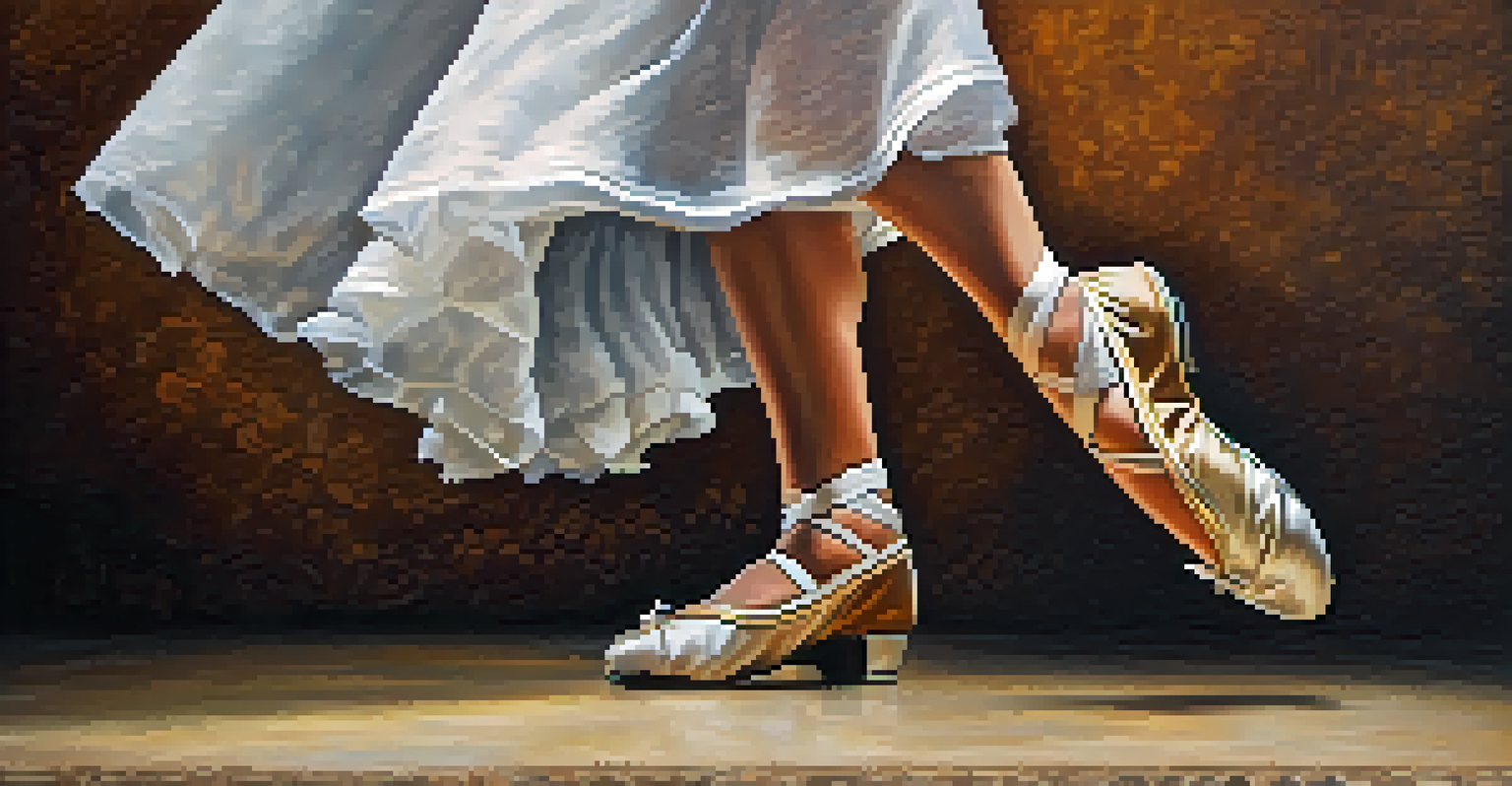How Dance Reflects Personal Identity and Individuality

The Emotional Connection of Dance and Identity
Dance is more than just movement; it's a powerful expression of who we are. Each step, twist, and leap can convey emotions that words often fail to capture. For many, dancing becomes a personal diary, where feelings and experiences are translated into art.
Dance is the hidden language of the soul.
Consider how someone might dance joyfully at a celebration, reflecting their happiness, or move slowly and gracefully in a ballet, portraying vulnerability. These physical expressions become a visual language, communicating our innermost selves to the world.
Through dance, individuals can connect to their cultural roots, personal experiences, and even their dreams. It serves as a mirror, reflecting not only personal identity but also the myriad influences that shape us.
Cultural Influences on Dance Styles
Diverse dance styles often represent the cultural backgrounds of individuals. From salsa to hip-hop, each genre carries unique stories, traditions, and values that dancers embody through their movements. This rich variety allows dancers to connect with their heritage, showcasing their cultural identity.

For example, a dancer performing a traditional Indian Bharatanatyam will express stories from ancient texts, while a street dancer might reflect the socio-economic struggles of their community. Each style serves as a canvas, painting the broader picture of personal and collective identity.
Dance as Identity Expression
Dance serves as a powerful medium for individuals to express their emotions and personal identities.
Cultural influences not only enrich the dance but also foster a sense of belonging. When individuals engage in dance forms from their culture, it strengthens their connection to their roots and encourages others to appreciate diversity.
Dance as a Form of Personal Empowerment
Engaging in dance can be a transformative experience, empowering individuals to embrace their uniqueness. Many find that through dance, they can break free from societal norms and express themselves authentically. This journey often leads to increased self-esteem and confidence.
Dance is the joy of movement and the heart of life.
Take, for instance, the story of someone who, after years of feeling out of place, discovers the liberating nature of dance. As they immerse themselves in movement, they begin to celebrate their individuality, learning to love their body and its capabilities.
Dance becomes a refuge where people can explore their identity without judgment. This freedom fosters a sense of agency, allowing dancers to redefine themselves on their own terms and inspire others to do the same.
The Role of Dance in Building Community
While dance is an intimate expression of the self, it also has the power to unite people. Group dances, whether in a studio or at a social gathering, create a sense of community and shared experience. This collective spirit enhances individual identities by fostering connections with others.
When people dance together, they share stories, laughter, and even struggles. This interaction can create bonds that transcend differences, highlighting how dance can serve as a universal language. It allows individuals to feel seen and understood within a larger context.
Cultural Roots in Dance
Different dance styles reflect the cultural backgrounds of individuals, allowing them to connect with their heritage.
Communities formed through dance often celebrate diversity and inclusion, where everyone’s unique identity is acknowledged and valued. This shared journey not only enriches personal experiences but also strengthens the fabric of the community.
Dance as a Tool for Social Change
Throughout history, dance has been a powerful medium for social commentary and change. Dancers often use their art to challenge societal norms, address injustices, and advocate for marginalized voices. This ability to convey messages through movement amplifies personal identities and resonates with broader social issues.
For instance, performances that depict struggles against oppression can evoke deep emotional responses, encouraging viewers to reflect on their own roles within society. Dancers become storytellers, using their platform to inspire action and provoke thought.
As individuals engage in these movements, they not only express their own identities but also contribute to a collective narrative that seeks to inspire change. Dance, thus, becomes a catalyst for dialogue and transformation, highlighting the power of individuality within a societal context.
Exploring Identity Through Dance Genres
Different dance genres offer unique avenues for self-exploration and expression. From contemporary to jazz, each style allows individuals to delve into various aspects of their identity. The choice of genre often reflects personal tastes, life experiences, and emotional states.
For example, someone drawn to contemporary dance might find solace in its fluidity and freedom, using it as a means to process complex emotions. In contrast, a dancer who enjoys ballet may appreciate the discipline and precision, reflecting their structured personality.
Dance Fosters Community Bonds
Group dancing creates a sense of community, fostering connections and shared experiences among individuals.
By experimenting with different dance forms, individuals can uncover new layers of their identity. This exploration not only enhances their skills but also enriches their understanding of themselves and their place in the world.
The Future of Dance and Personal Identity
As we look toward the future, the evolution of dance continues to reflect changing identities and values. With the rise of technology and social media, dance has become a global phenomenon, allowing individuals to share their unique stories with a wider audience. This connectivity fosters a richer exchange of ideas and styles.
Moreover, as society becomes more aware of individual differences and inclusivity, dance is adapting to embrace these changes. New movements and styles emerge, reflecting the diversity of personal experiences and identities, which can empower individuals to express themselves authentically.

In this ever-evolving landscape, dance remains a vital form of self-expression and identity exploration. It will continue to inspire future generations to celebrate their individuality while fostering a sense of community and connection.